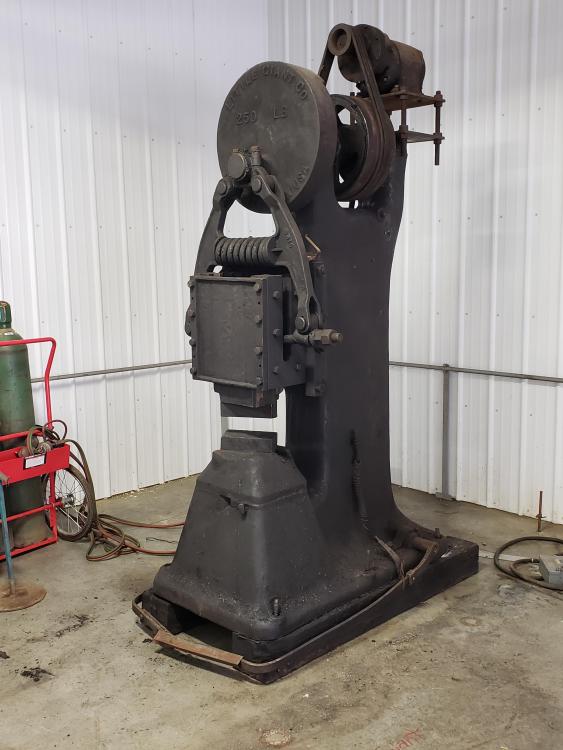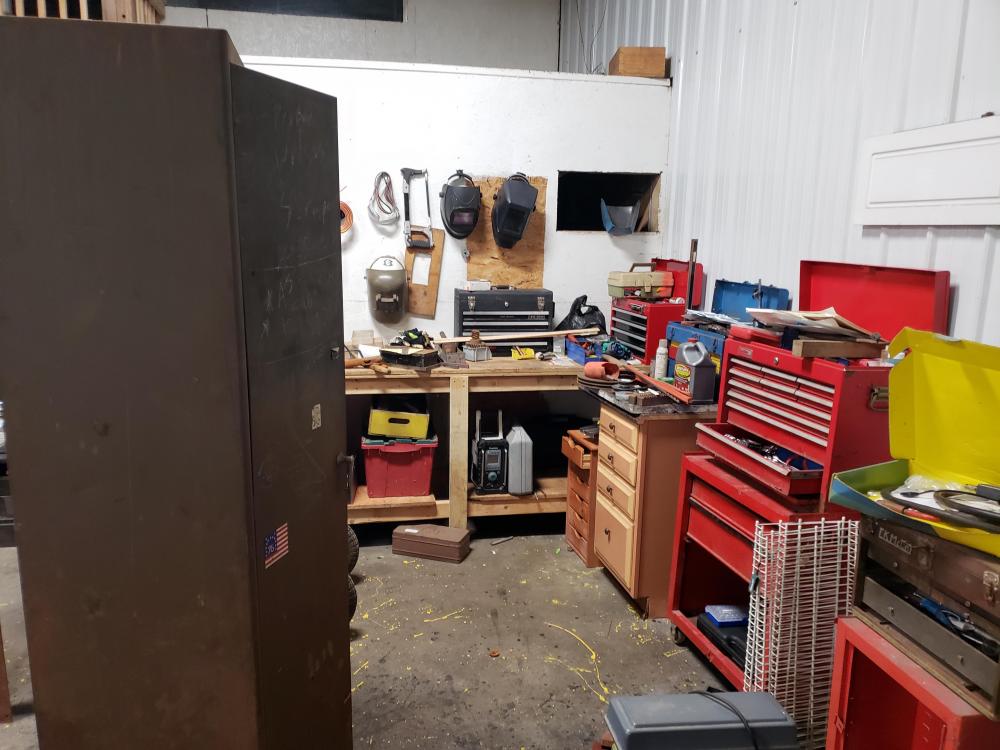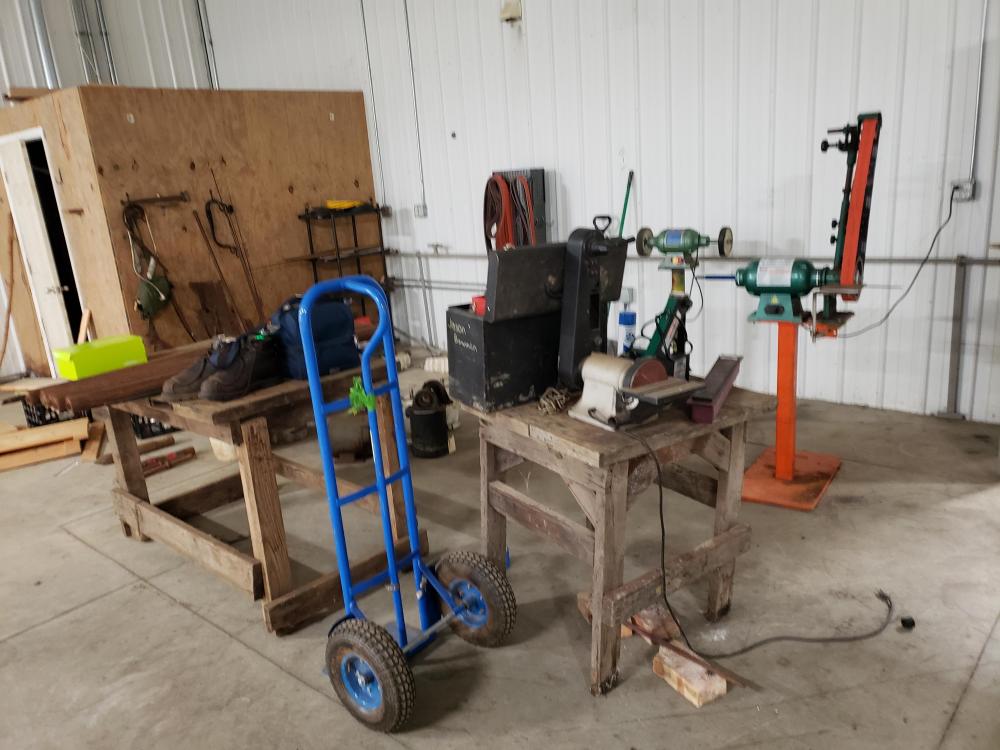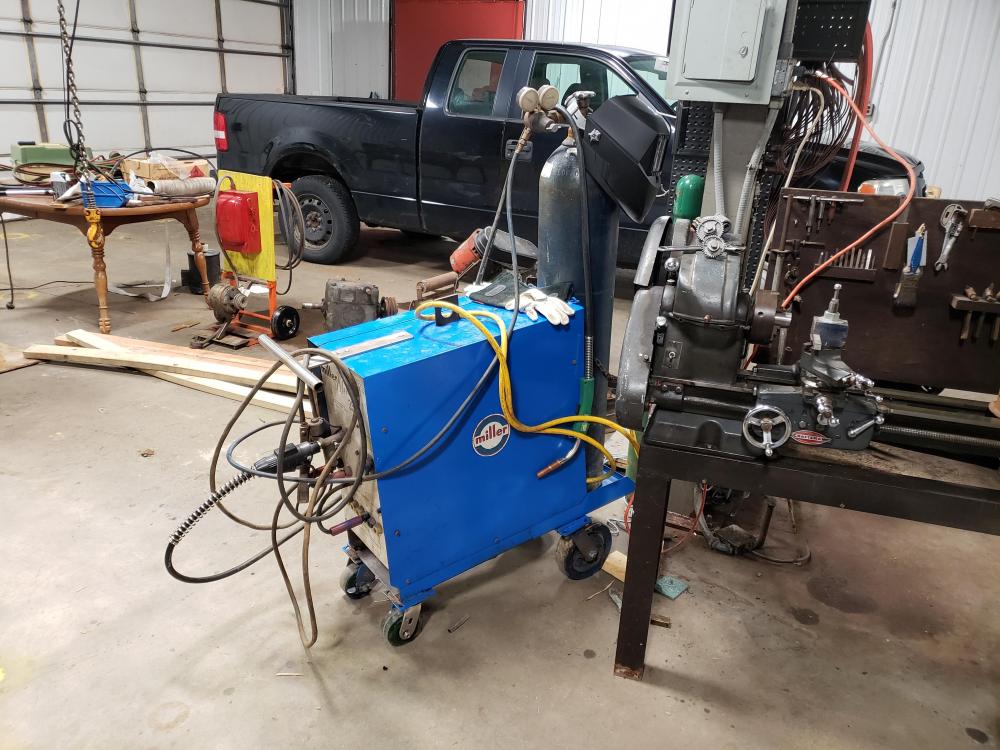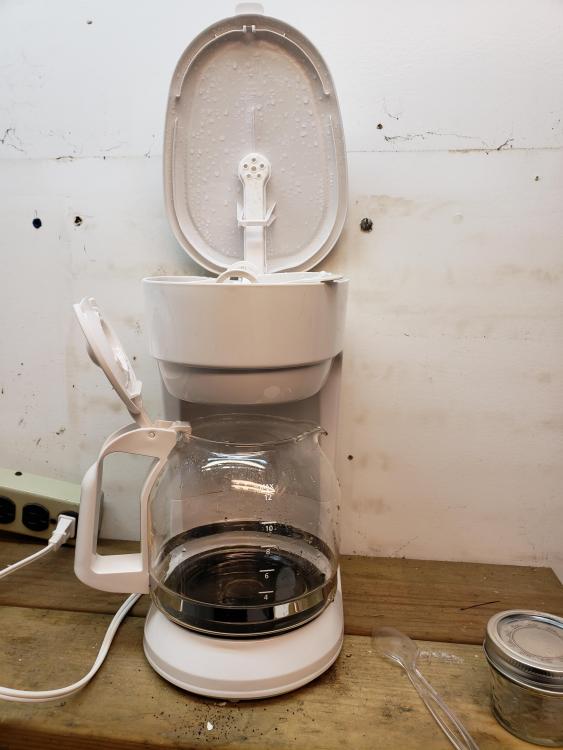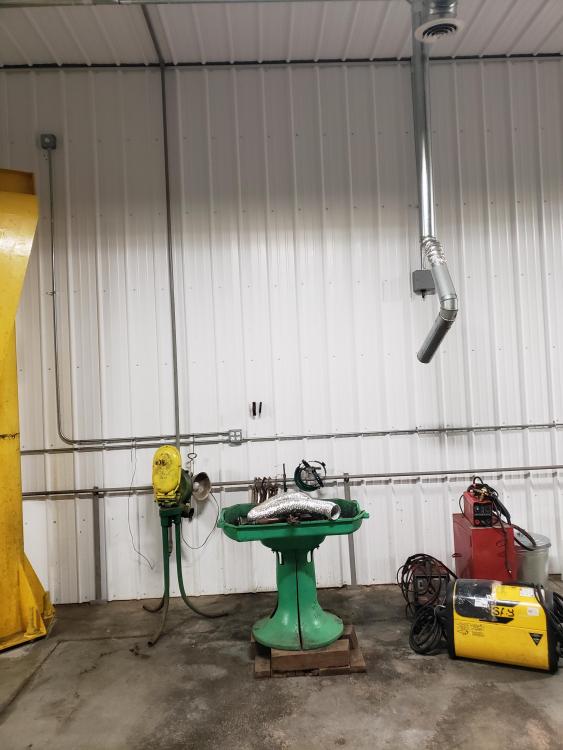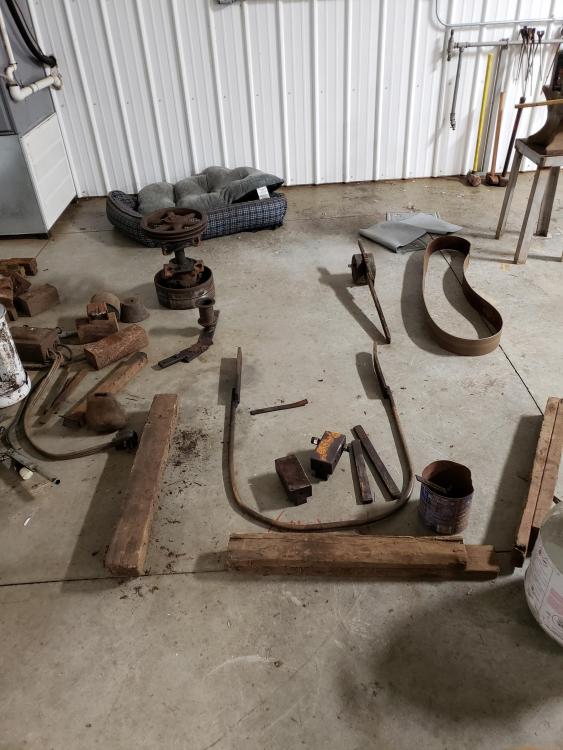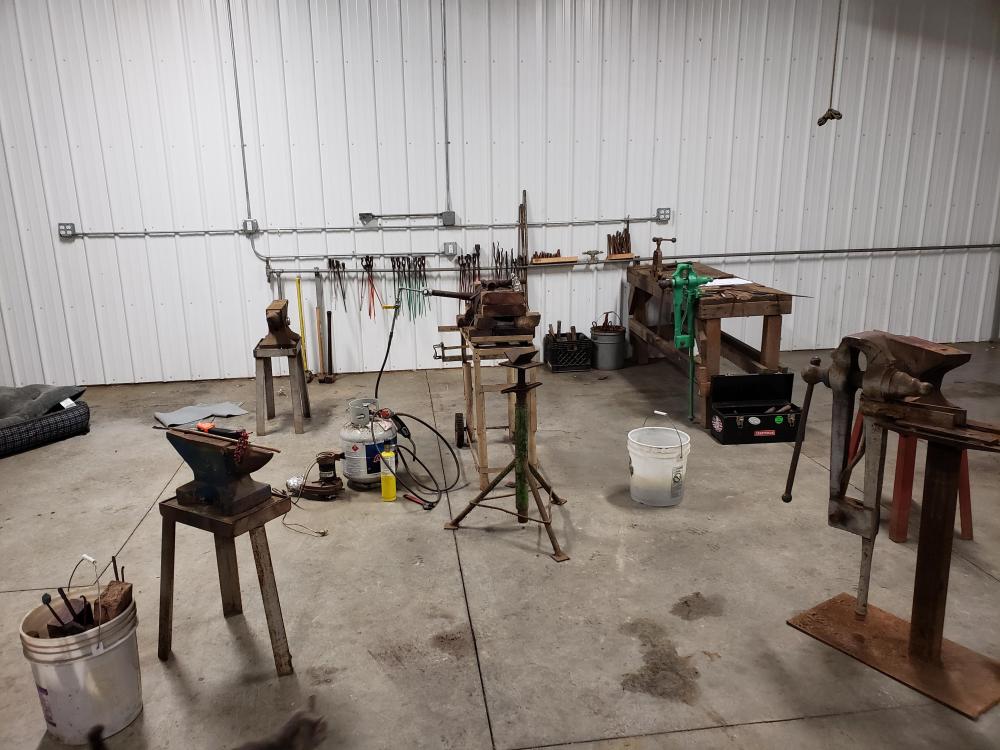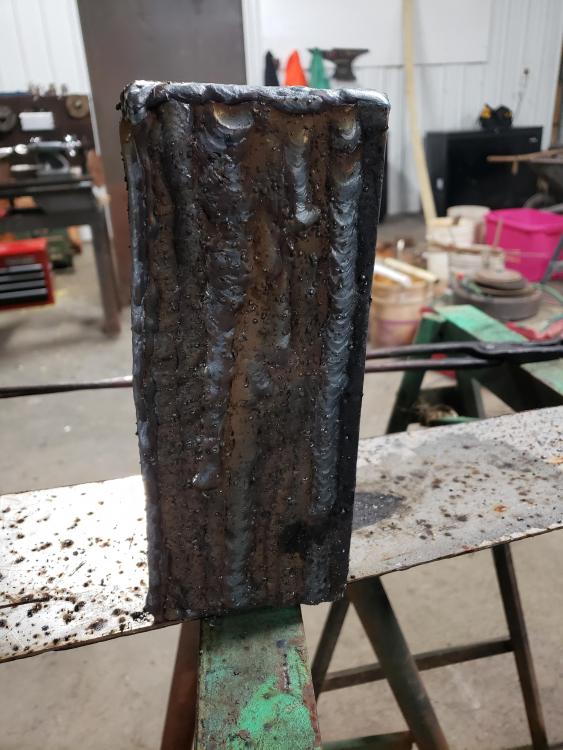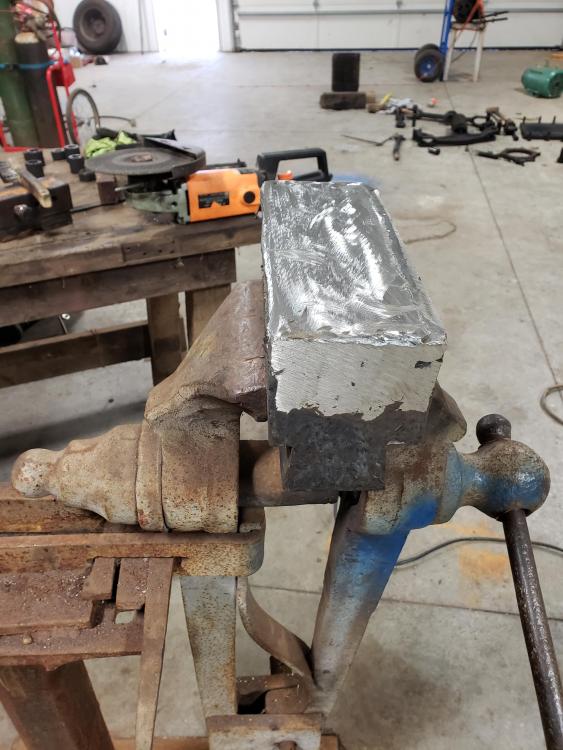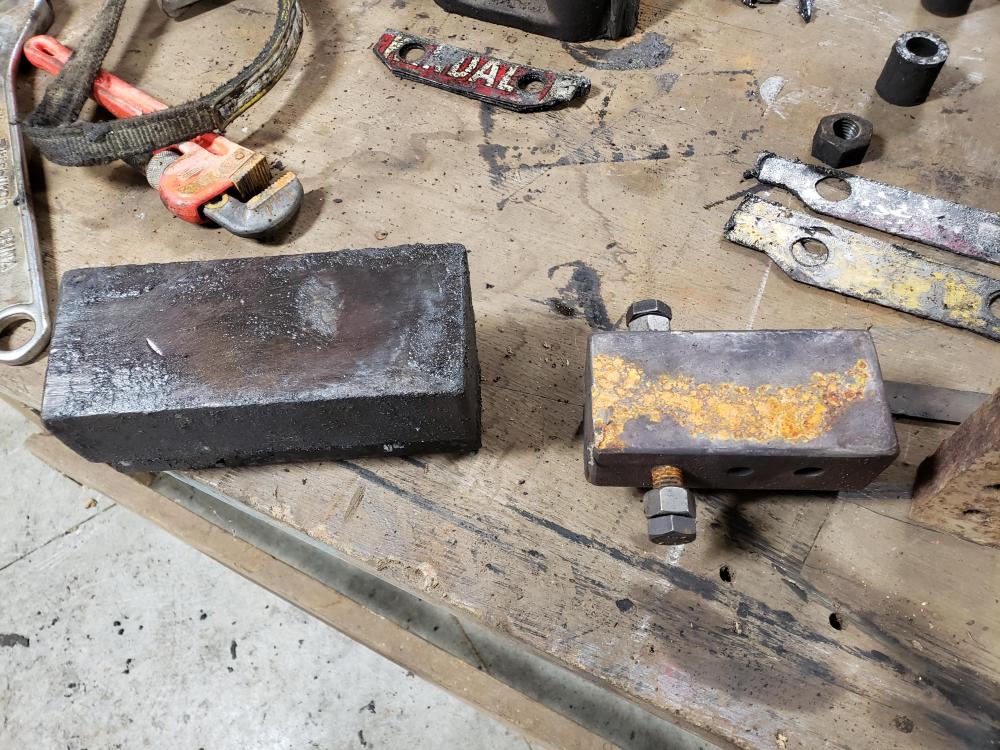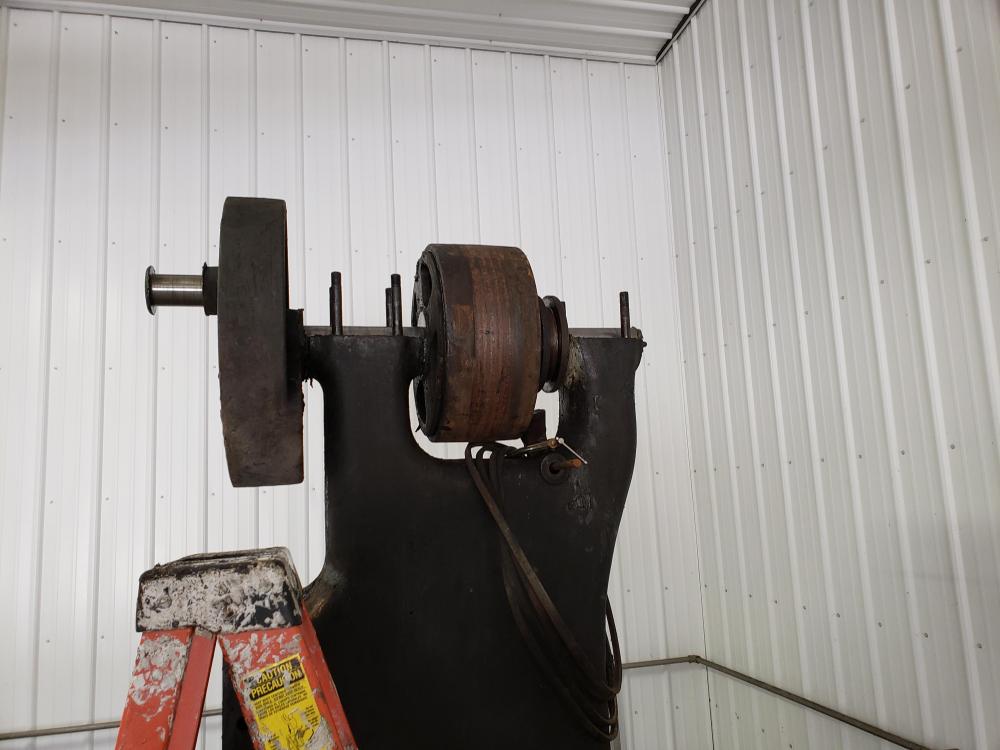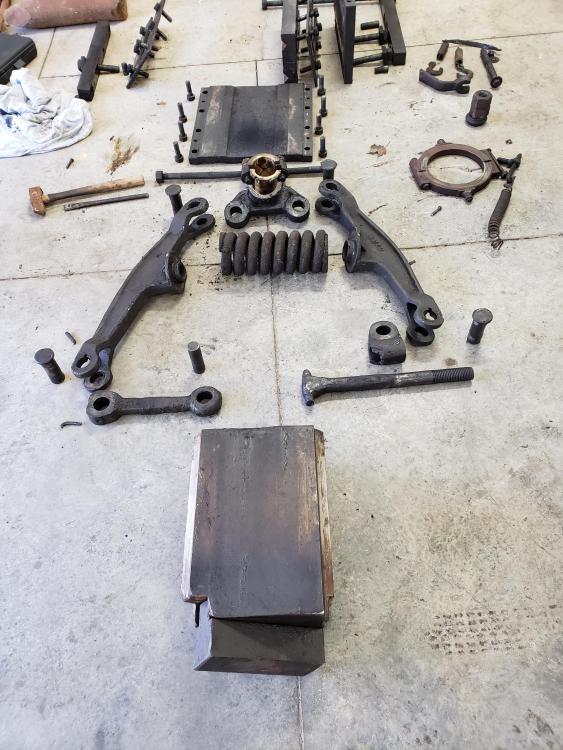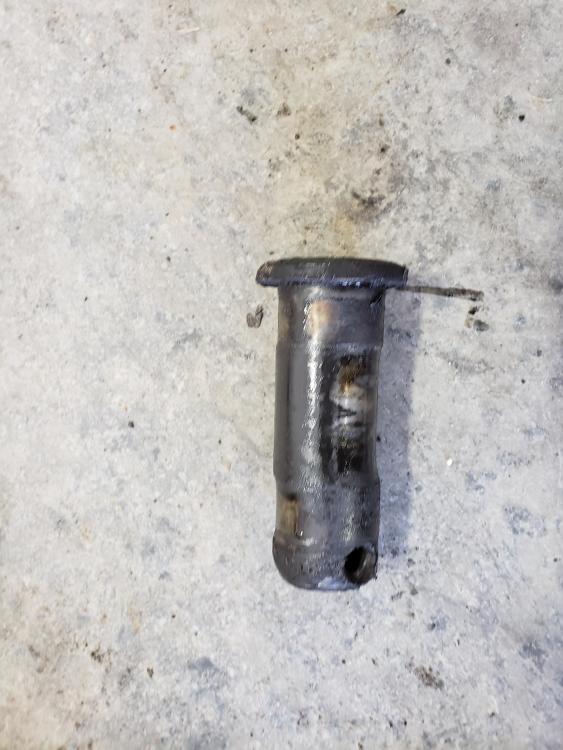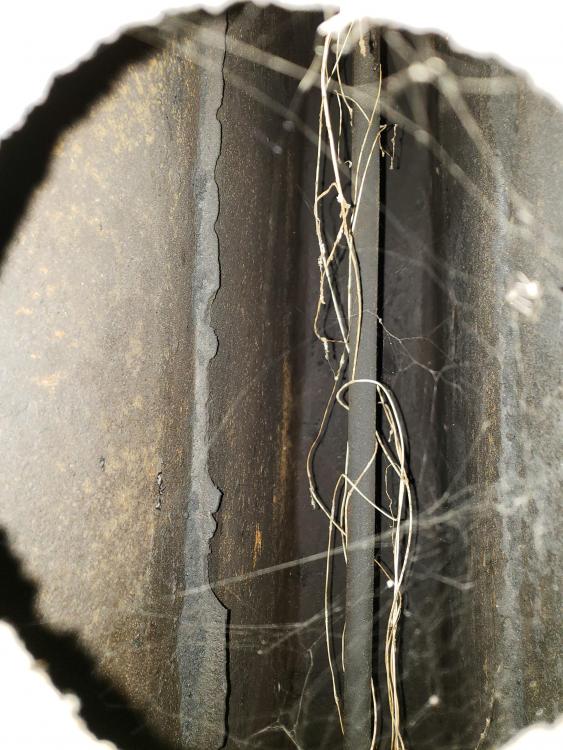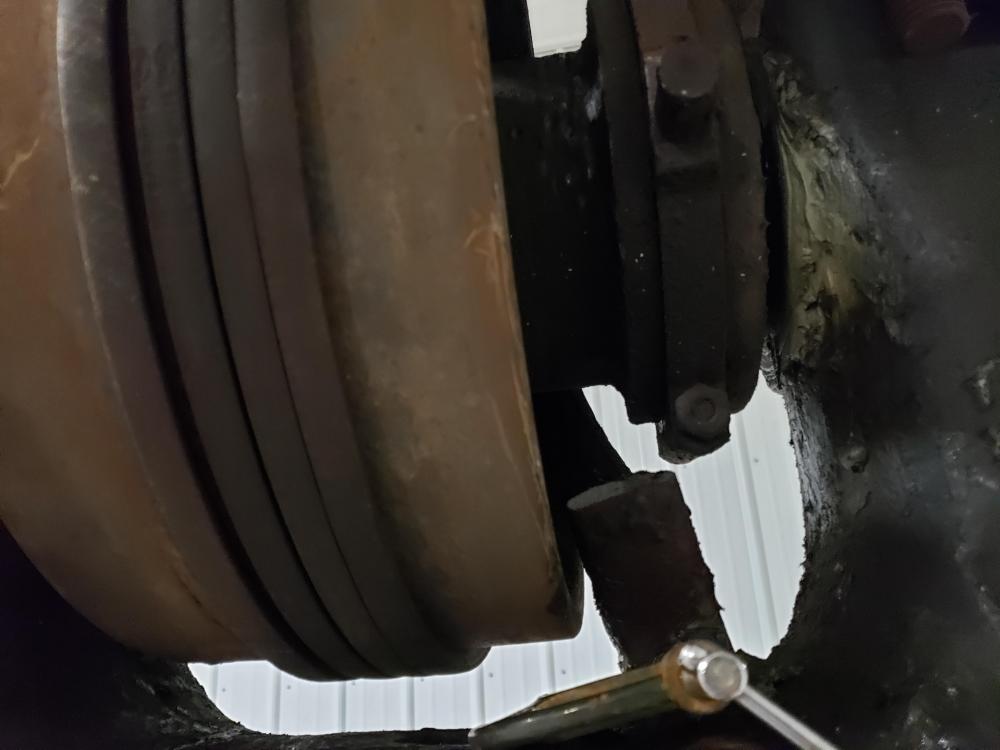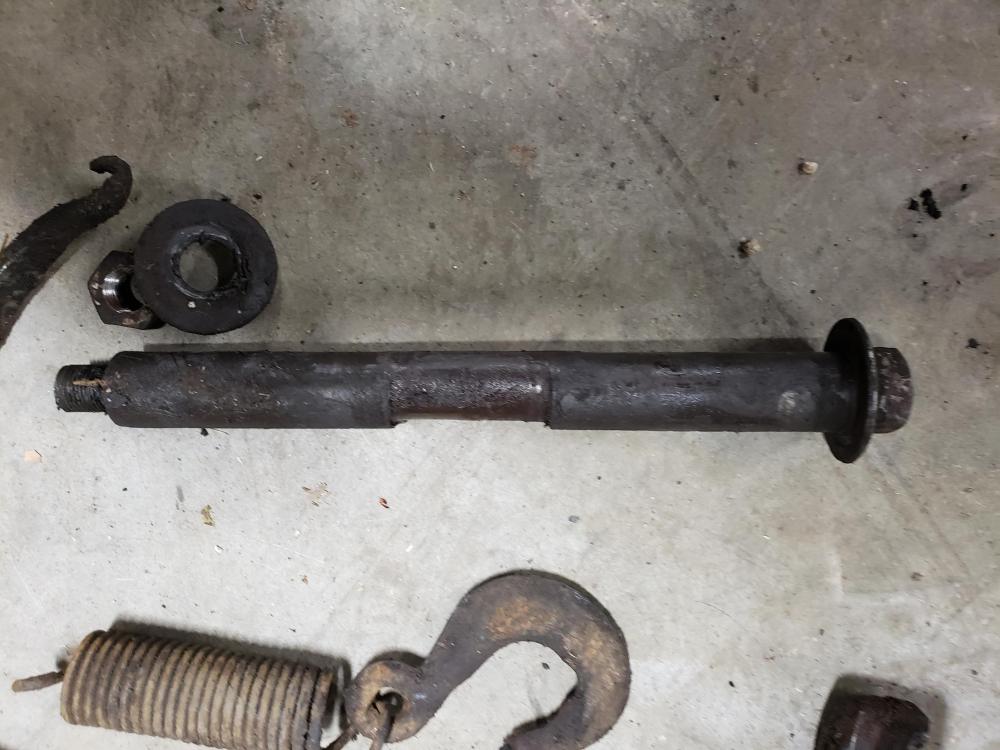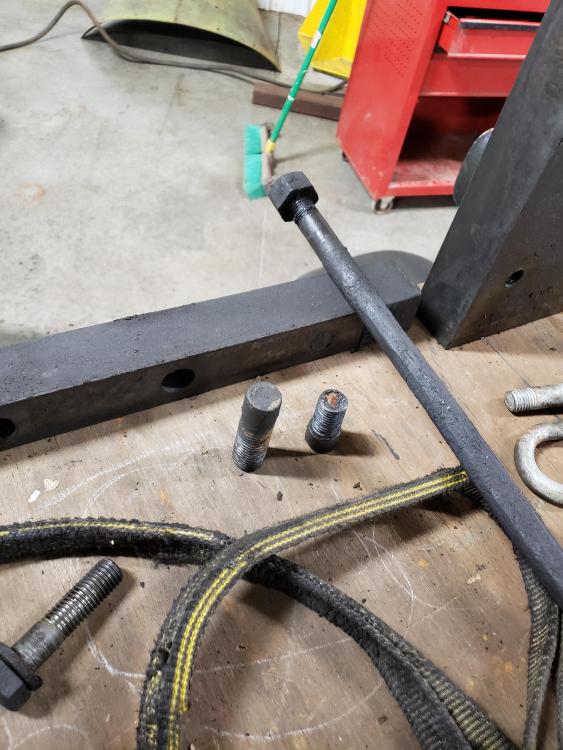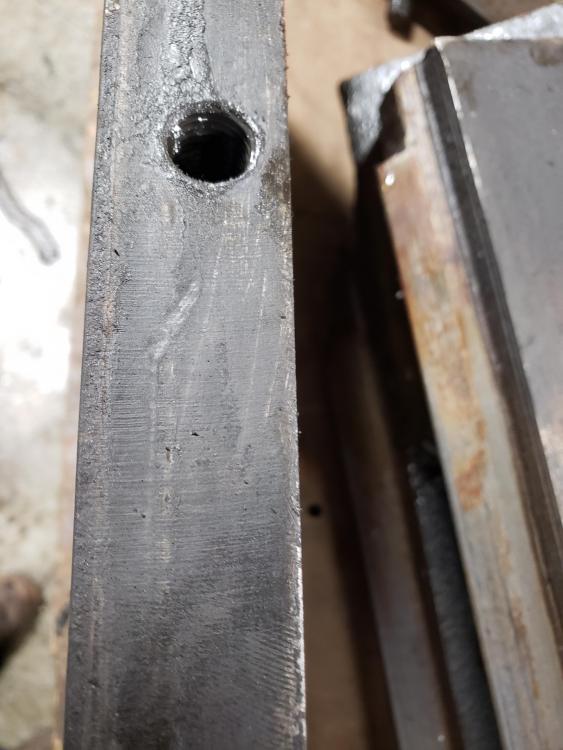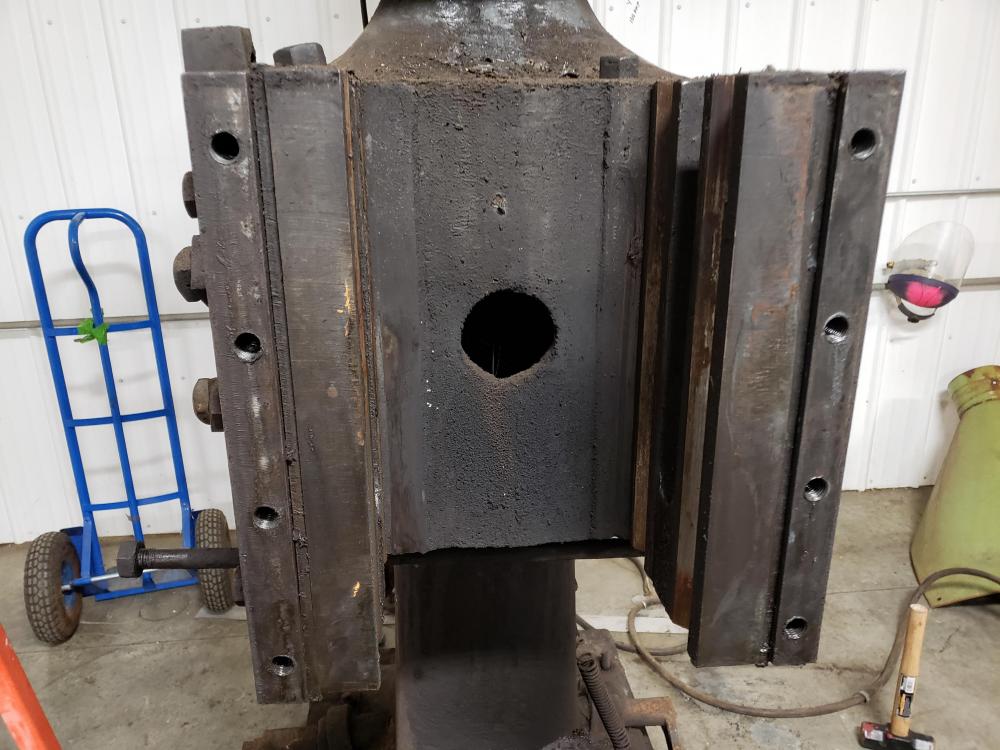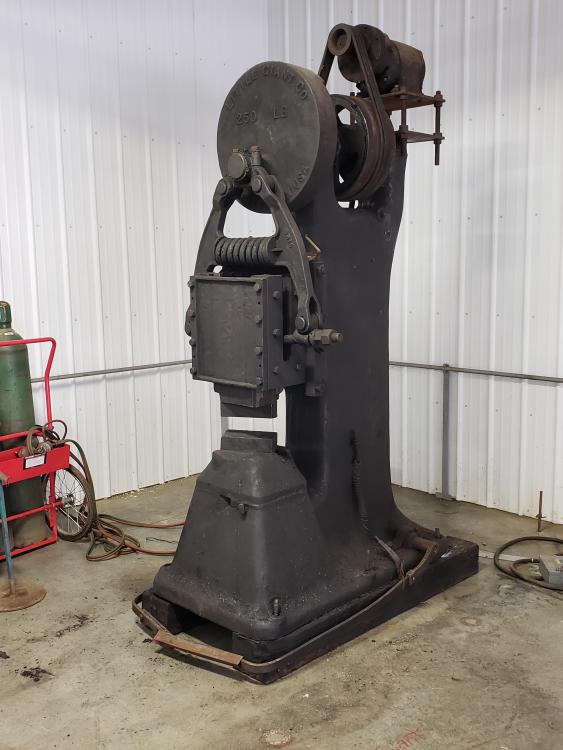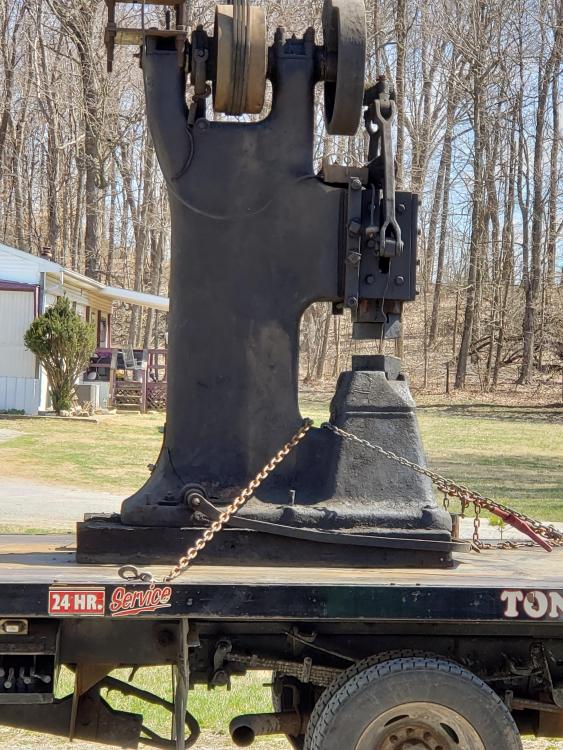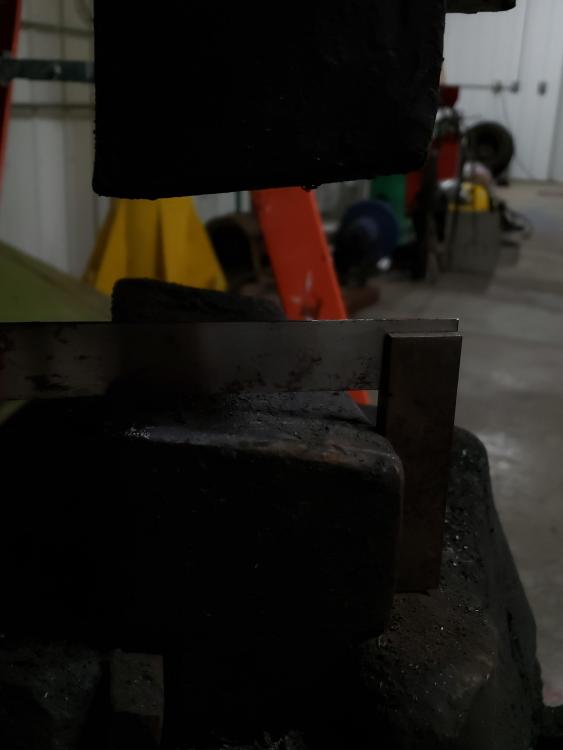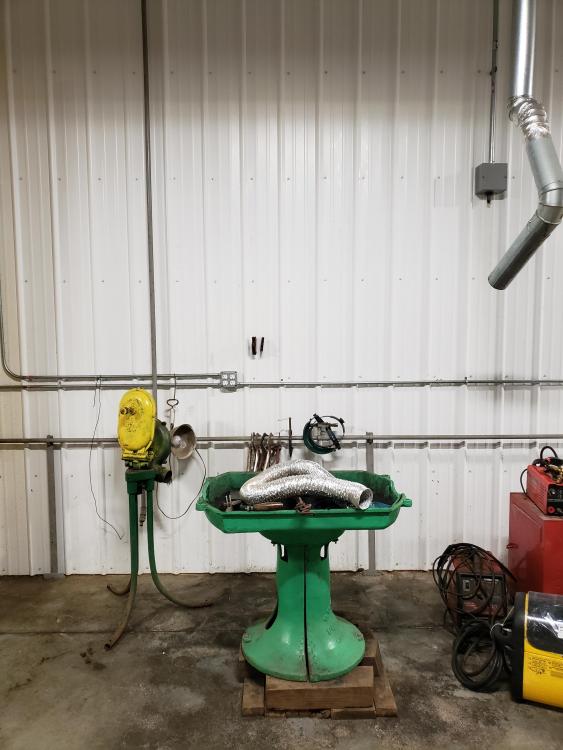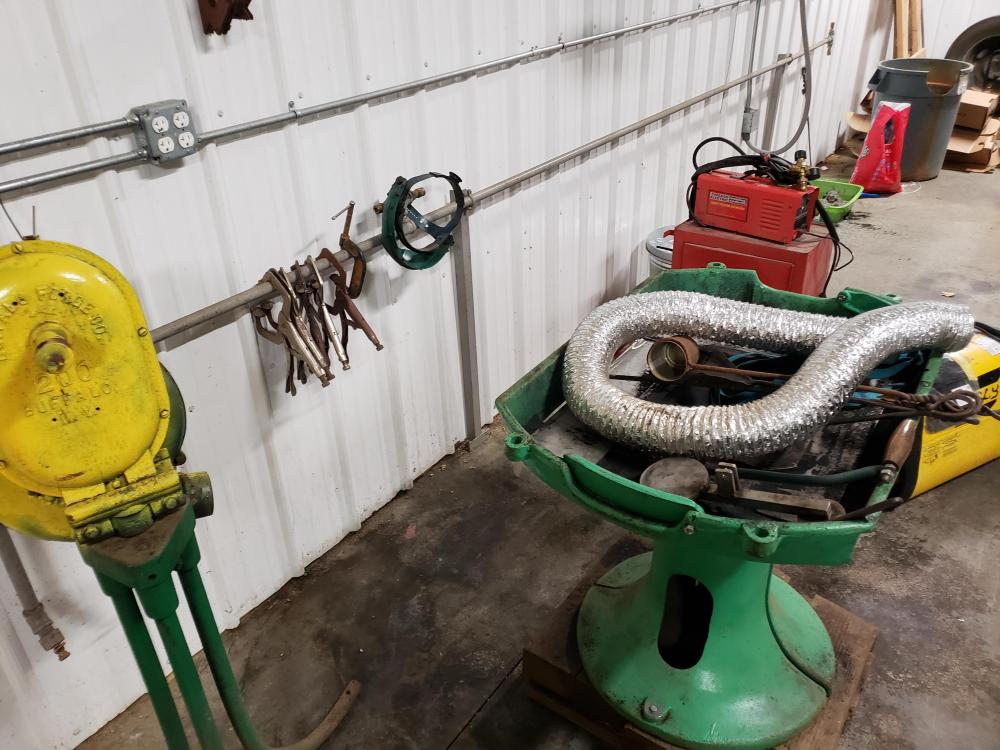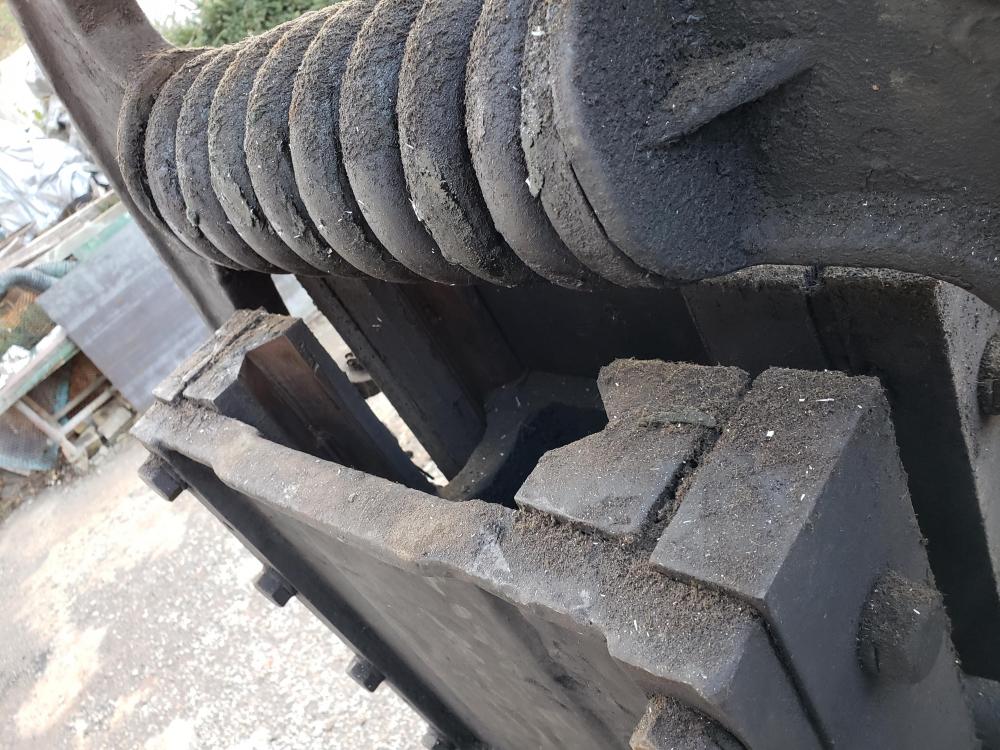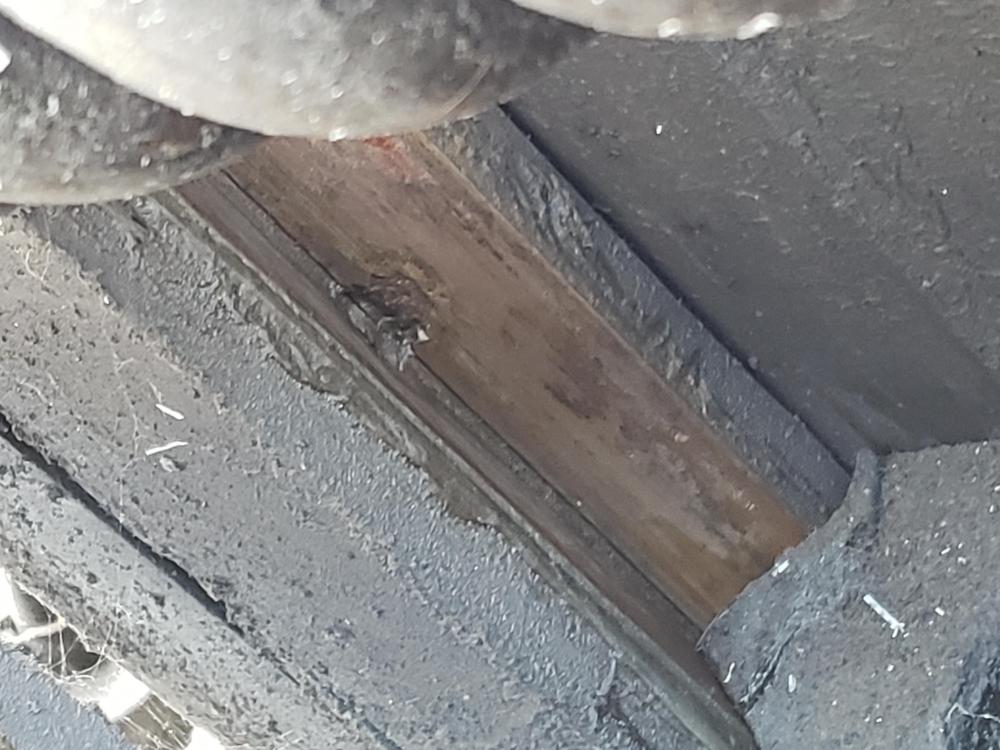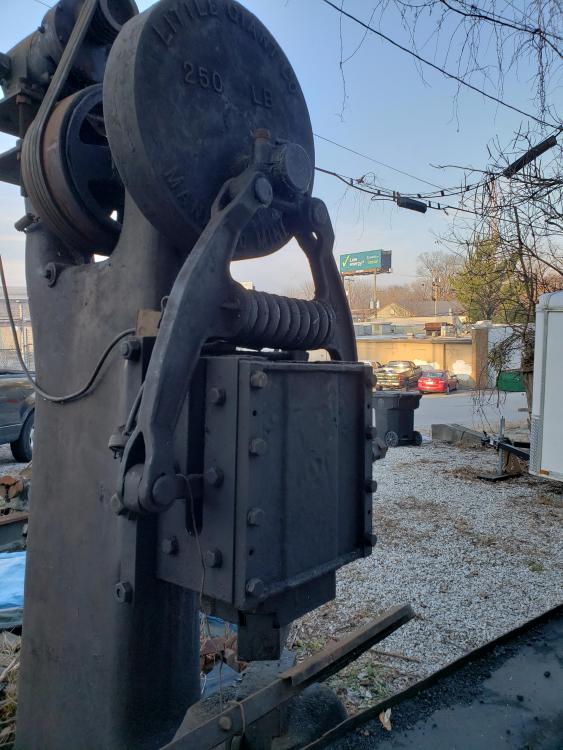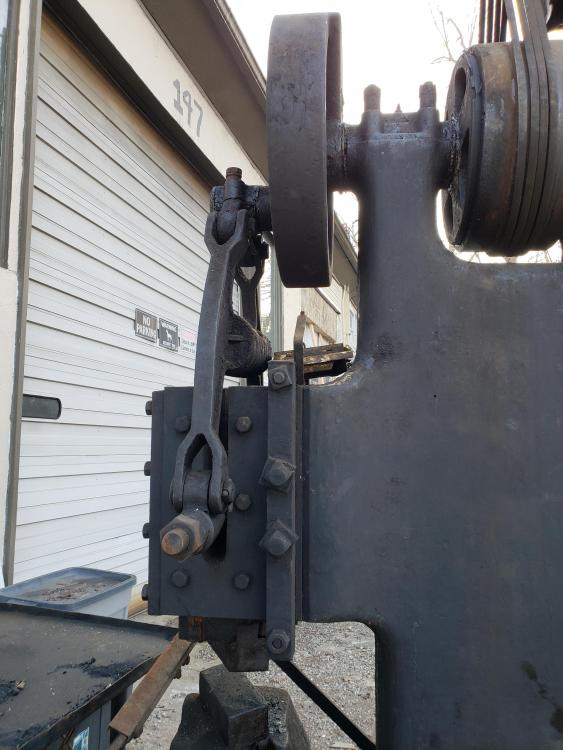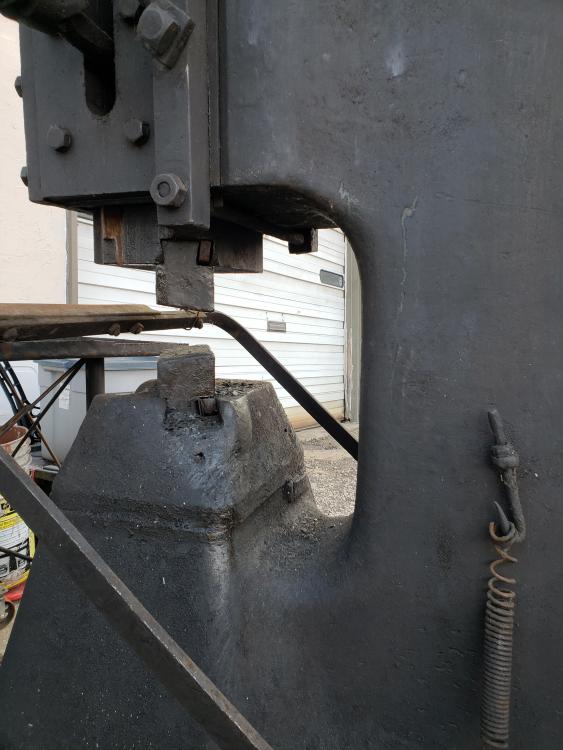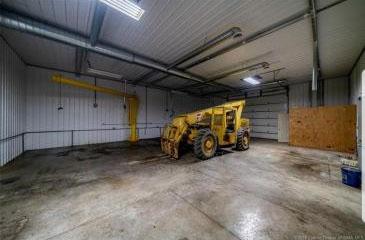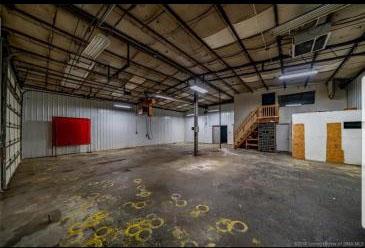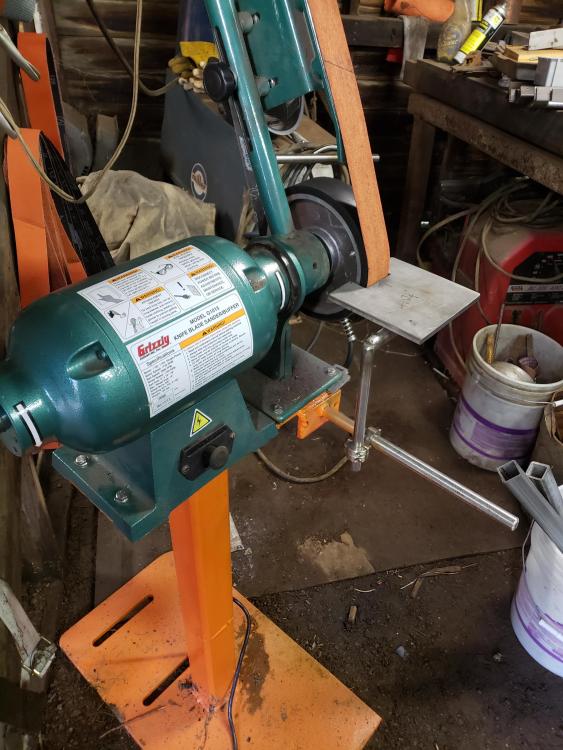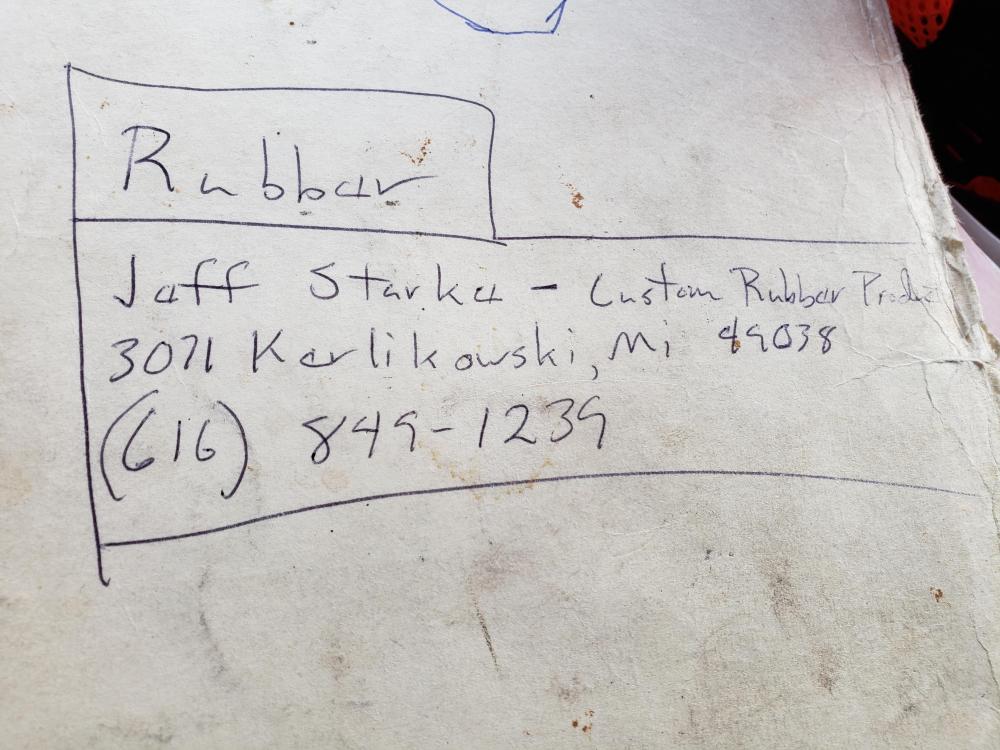-
Posts
469 -
Joined
-
Last visited
Content Type
Profiles
Forums
Articles
Gallery
Downloads
Events
Everything posted by jason0012
-
I have forging capacity well beyond what my old product line requires. I have also been out of the business for a few years ( the internet was a new thing) and things have changed a bit. My new shop represents a fair cost, just to maintain so it needs to start producing. On top of that I despise my day job, and see far greater potential in my forge shop anyway. I know full well that selling trinkets at art fairs is not going to cut it, and big architectural work is no fun when working alone ( been there done that) I am thinking some good old fashioned comercial forging would be good, but have no idea how to find the work. There are lots of farms, quarries, and stone companies near me. I also can't help thinking of a post from a while back complaining about rail road work forging break wedges. How would one find these sorts of jobs?
-
Moving a blacksmith shop sucks! I have most of the small stuf. Starting to get the machines moved to thier new spots. This place is cavernous. It is taking some getting used to, but I look forward to it being usable soon. My last move was one trip in a pickup, over 25 yrs ago...
-

old style 250 pound little giant
jason0012 replied to jason0012's topic in Power Hammers, Treadle Hammers, Olivers
The Bradley is a 75. These are soft dies. That is both good and bad. Soft dies don't hold up as well as good steel, but they are easy to repair, and I dont have $750 lying around for good steel. So with a but load of welding... -

First power hammer help
jason0012 replied to Mihai Cadis's topic in Power Hammers, Treadle Hammers, Olivers
Very cool machine. Very different. It is fun seeing the machines from other places that never turn up here. Any idea where it is from? -

How big of a hammer
jason0012 replied to Millennial Blacksmith's topic in Power Hammers, Treadle Hammers, Olivers
A bigger hammer will run slower, but to a point will have an advantage in more energy available. There is of course a trade off. The power to run a huge hammer might cost more than can be justified for some work but with a 500 pound or less hammer you probably aren't to the $200 an hour energy bill. After a 28 hr blitz breaking down my 250, I have to say, my enthusiasm for bigger hammers is fading... -

old style 250 pound little giant
jason0012 replied to jason0012's topic in Power Hammers, Treadle Hammers, Olivers
When we got the hammer loaded Craig made a comment along the line of " look at the size of those dies" here is the bottom 4x9, next to the 3x6 from my Bradley. -

old style 250 pound little giant
jason0012 replied to jason0012's topic in Power Hammers, Treadle Hammers, Olivers
I have everything I dare pick off on the ground. The flywheel worries me. My 1/2 ton block may not be up to the weight , and my 2 ton is too tall for the space. Some planning is in order.... I have some really choice examples of worn pins -

old style 250 pound little giant
jason0012 replied to jason0012's topic in Power Hammers, Treadle Hammers, Olivers
The clutch fork was broken when loading. Not a difficult repair but removing it is no small feat. The construction of this hammer is not what I expected. I see why Sid seemed to have trouble describing how they differed from the smaller models. The ram/ arms work just like the little hammers, but this frame is just plain weird. The thing is hollow and the clutch operates by means of a skinny rod that runs inside (feindishly)! Oh and look at the wear on that axel I am not sure if the guides are original or not. There is a pair of bolts buried inside the guides that look like they may have originally been holding things together and broken off over time. At the same time they also seem to function as dowel pins to hold the plates in register. The plates appear to be flame cut rather than cast making me question if they are original to a 1919 vintage machine. It seems that very little information is available on these early machines so I plan to document as much as I can -

old style 250 pound little giant
jason0012 replied to jason0012's topic in Power Hammers, Treadle Hammers, Olivers
-

Finding large 4140 stock
jason0012 replied to RKM556's topic in Power Hammers, Treadle Hammers, Olivers
-

Little Giant flywheel to shaft connections
jason0012 replied to Scrap rat's topic in Power Hammers, Treadle Hammers, Olivers
Just a straight shaft. The key is tapered and the shaft is shrunk on- no set screws -
I am getting moved into the new shop. I have one of my two coal forges here now, but not quite set on how to vent it. This side of the building has an attic so my preference is to go through the wall with something like Uri Hoffi's flues. I have parts for a " super sucker" that I never got completed, but don't know if I want the ceiling/ roof penetrations in this metal building. Flue parts have always kind of thrown me as I have never been able to source parts bigger than 8 inch. Is there somewhere I can get 12 inch flue pipe?
-

old style 250 pound little giant
jason0012 replied to jason0012's topic in Power Hammers, Treadle Hammers, Olivers
Yikes that alstate rod is expensive! Still, might be worth a look. Despite a lot of experience with nickle rod, I really hate the stuff... -

old style 250 pound little giant
jason0012 replied to jason0012's topic in Power Hammers, Treadle Hammers, Olivers
The guides are Vs in four corners. The blocks are all independantly adjustable. A tad different from what I thought these early hammers used. I was pretty sure I had seen a serial number on it before, but can't seem to find it now. Any idea where it might be? -
We close in mid december. Assuming all goes as planned with the bank.
-
So forming a corporate entity is a big part of this legal protection? I have run circles with insurance companies and never gotten anywhere.
-

Limits of Metal Cutting Circular Saw Blades ???
jason0012 replied to knots's topic in Saws, bandsaws, hack saws, etc
I have chewed through a lot of 5/8 inch plate with a worm drive saw and a metal blade. It sucks big time. Wear a welding jacket and gloves and neck, face head protection. Those chips are hot and sharp and go everywhere, in big piles.... I don't know about 1 3/8 plate. That might be a bit too much for the saw. It would be cheaper and easier to use a torch. -
I am working on floorplans/ layouts for the new building, and am kind of leaning twords wanting a separate room for grinding. While I only have 3 at the moment I will likely have a half dozen, possibly more belt grinders shortly. All my scribbling on graph paper it looks like a 14x18 would be about right. With two buffers and 4-6 grinders and a bench or two. Anybody who has gone this route have any advice?
-
I have tripped over things in my 400 sq ft shop since 1992. I outgrew it by 96. Tomorrow I am meeting the realtor banker ect to purchase a new place. The shop is kind of overkill. 53x84 with heat and air. Two air compressors with a dryer and a dust collector, and three cranes, oh and 480 volt 3 phase....now I have to figure out how best to arrange the place. Plenty of room for fabricating, forging, grinding and machining. The building is divided in half. I suppose one side should be forging with everything else on the other side. Any suggestions?
-
I have a grizzly 2x72. I bought it about two years ago an wish I had bought it 20 yrs ago. I have done a fair bit of grinding on a craftsman 2x42 which was a nice option for just under $150 new, but did leave a lot to be desired. I have ground countless knives, dozens of axes and three swords on a delta 1x30 that I bought back in the late 80s. The 1x30 was ok( well no, it really wasnt..)but the bigger grinders make a big difference and belt cost on a smaller machine, like the 1x30 adds up quick to make the more expensive machine really attractive. I have parts for about three home builds for the new shop. The grizzly is a good basic machine at a really attractive price, but it does have its shortcomings.
-

Bradley Cushions needed
jason0012 replied to Jason Lonon's topic in Power Hammers, Treadle Hammers, Olivers
A fellow in Michigan made mine in the early 90s. I have no idea if the contact info is any good or not. -

How much control on a power hammer?
jason0012 replied to AR. Hillbilly's topic in Power Hammers, Treadle Hammers, Olivers
True enough about the rabbit hole. I wouldn't discourage anyone from adding a small hammer. Perhaps if I thought they were getting in over their head, paying stupid money for a trashed machine, buying way too big ( like a 3000 pound steamer) or just not competant around machines. In general, anyone who can handle hand forging will find a power hammer a great asset. The tire hammers are a good affordable entry point. I think that is exactly what Clay had in mind with the design. -

How much control on a power hammer?
jason0012 replied to AR. Hillbilly's topic in Power Hammers, Treadle Hammers, Olivers
Clifton would make coat hooks on his 250 pound Murray just to prove a point. As long as the hammer has decent control and runs predictably you should be able to work as delicate as need be. I haven't used a tire hammer but from what I see, this level of control looks pretty common on them. -

Is the 2x72 belt grinder worth the upfront cost?
jason0012 replied to Seabass's topic in Grinders, Sanders, etc
A 2x72 is very much worthwhile. I bought a grizzly about two years ago and am kicking myself for not buying one 15 years ago. With these machines you get what you pay for and the uber expensive machines are actually better. Unless you are a professional full time blade grinder spending 10 hrs a day with the machine, you won't really need the top shelf machine. These are really simple machines and easy enough to build yourself as well. There are numerous good designs online. -
ROI used to have a masonry bin behind the shop that held about a ton and a half. In the mid 90s I got away from burning coal and the coal pit got torn down and its bricks comited to flowerbeds or something. Now I am back to burning coal. I have a trash can I am currently keeping it in, but would like to get a ton or two. I would like to find some sort of container for it. Billy Merrit used an old oil tank. I am curious what everyone uses. I will be moving the shop soon so may just build a cinder block bin at the new place...

